The Savinelli company has been famous for its quality pipes almost since its inception in 1876. Indeed, the Punto Oro series of classically shaped pipes were designed to compete head-on with those of English rival Alfred Dunhill, and carry a brass pin or “golden dot” on the stem in the same place as Dunhill’s famous White Spot.
The Mister G line of pipes is a sub-set of the larger Punto Oro series and is recognizable by its brass pin, dark sandblast finish, smooth red rim and brass-and-briar band. Judging by the Savinelli website, the line has been discontinued, although new Mister G pipes are still available at retailers.
The pipe on my worktable here is a 920KS shape, which in layman’s terms translates to a Bent Dublin with a King Size bowl. It arrived in decent estate condition, with a dirty, worn finish, dents to the outer rim, knife gouges to the inner rim and a layer of tarry lava covering the entire rim surface. The chamber had a fair layer of cake built up. The stem seemed to be in better shape, with only a bit of calcium/salt buildup at the bit end and a bit of chatter.
The flat bottom surface of the pipe is stamped “Savinelli” over “Punto Oro” over “- Mister G” followed by the Savinelli shield logo and “920 KS” over “Italy”. The stamps are a little off-centre to their designated patch of briar, but all are crisp and easily readable.
When I twisted out the stem, I found a 6mm filter adapter in place in the tenon. This short length of plastic (delrin?) tube takes the place of the Savinelli triangular balsa filter for those who prefer an unfiltered pipe. I’m not sure if the adapter is original; it may be a DIY solution. In either case, it fit well, but was covered in tars and debris.
I dropped the gunky filter adapter into an alcohol bath to dissolve the crud stuck to it, and used more alcohol, pipe cleaners and cotton swabs to clear out the stem. The airway was quite dirty, and there was a lot of sticky tar inside the tenon/filter holder. It took quite a while to get the stem clean.
The stem went into an Oxyclean bath while I worked on the stummel. I reamed the bowl back to briar and then scrubbed the dirt out of the rustication with Murphy’s Oil Soap and an old toothbrush. The scrubbing also removed quite a lot of the lava from the rim, enough to show numerous dents and chips in the outer rim edge.
I topped the bowl with some 220-grit sandpaper. This stripped away the last of the lava and dressed off most of the rim surface, erasing a lot of scratches and dents. I used a scrap of 220-grit sandpaper to bevel the inner rim to remove the knife gouges, and I very gently sanded the outer rim to deal with the dents and dings there. Much improved!
When the stem came out of the Oxyclean soak, I scrubbed away the light oxidation with Magic Eraser before sanding out the tooth chatter with 220-grit sandpaper. One deeper tooth dent in the lower bit was drop-filled with clear CA glue. You’ll notice in the first pic below that the Oxy soak bleached the red colour from the briar band. When the glue had cured, I sanded it flush and then polished the stem with a full course of micromesh pads to remove the sanding scratches and bring out a rich shine.
Stain pens are a great addition to anyone’s restoration tool box. Usually sold in sets of three, I used the medium stain pen in my set to re-stain the rim and the briar stem insert.
I refreshed the finish on the sandblasted bowl and shank with a coat of Fiebing’s Black leather dye which I “painted” onto the briar with a cotton swab, which allowed me to avoid getting black dye on the smooth portions of the stummel. I let it dry, then buffed away the excess with an old towel. A coat of mineral oil over the entire stummel refreshed the briar and deepened the new finish.
Then it was time to take the pipe to the buffer for a run of White Diamond and several coats of Carnauba wax. The sandblast on this pipe is light enough that I didn’t need to worry about getting wax caught in the nooks and crannies. This Savinelli Punto Oro Mister G is looking sharp in its refreshed red and black suit and is ready to take its place in a new piper’s rack and rotation.
I don’t think anyone could go wrong with this pipe. It’s a classic shape produced by one of the oldest and largest pipe factories in Europe, it’s good looking by anyone’s standard, and it weighs in at a mere 29 grams! Clenching this one is almost like clenching air.
You can find this Mister G 920 KS in the DadsPipes Store now.
Here’s the finished pipe. Thanks for looking, and until next time, Happy Piping!


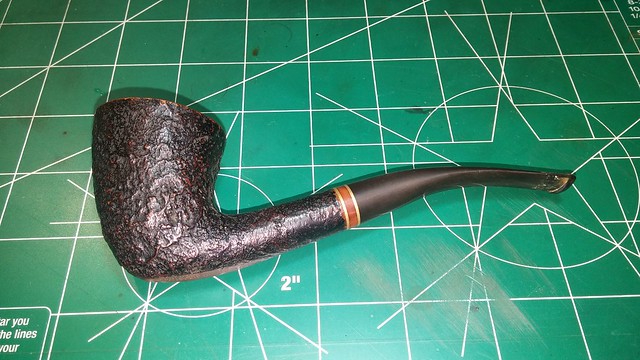
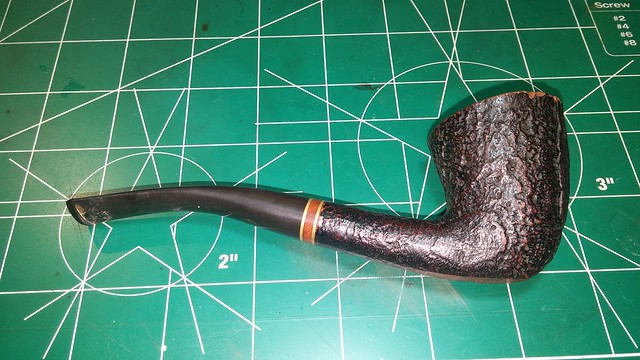
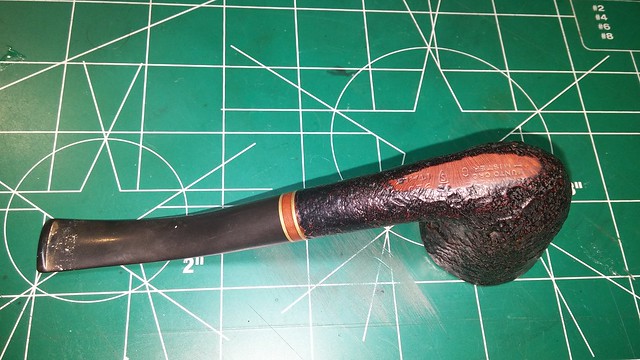
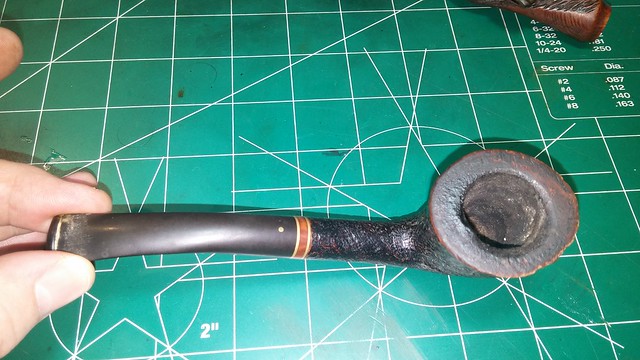
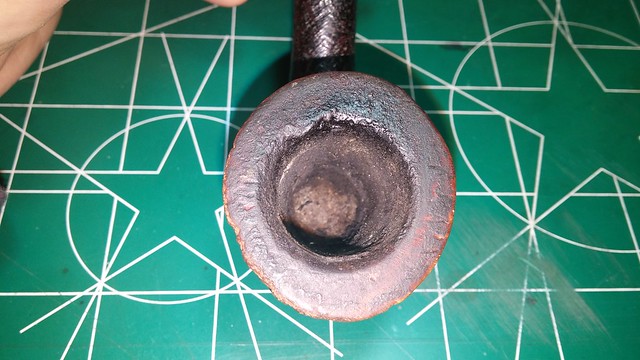
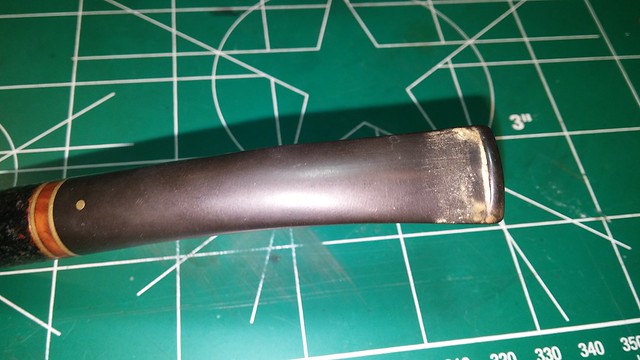
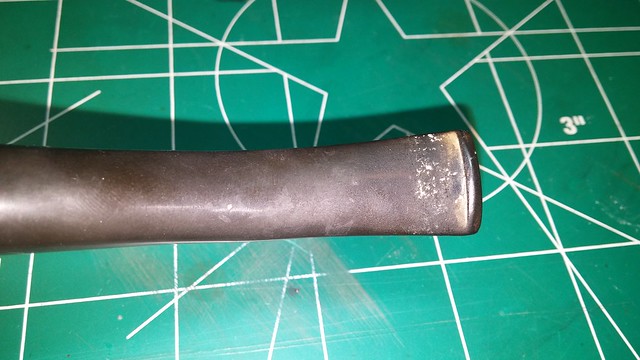


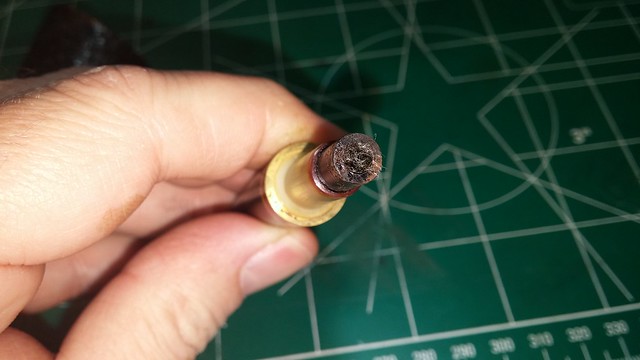
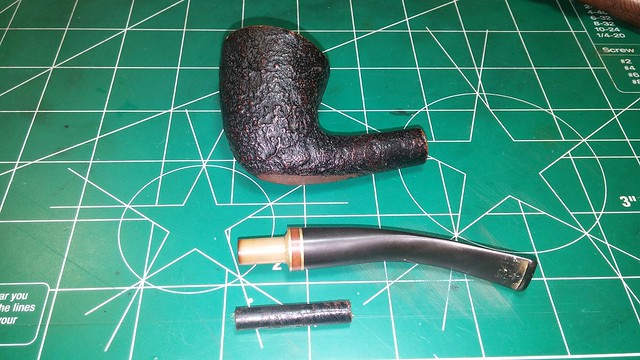
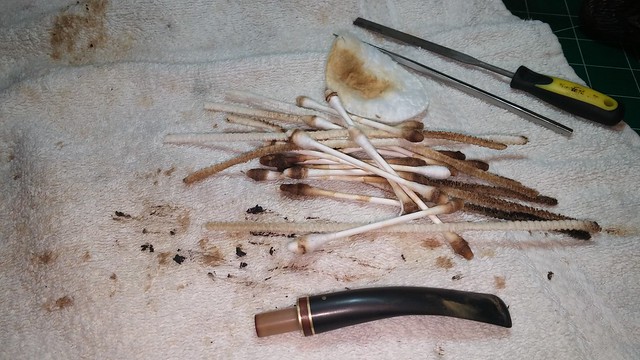

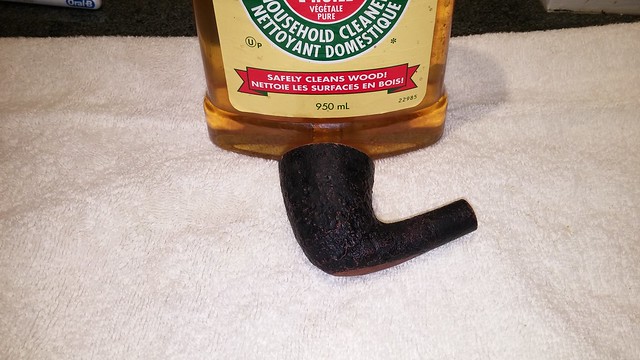
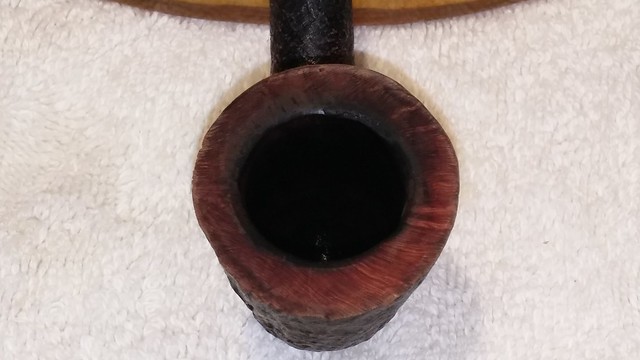

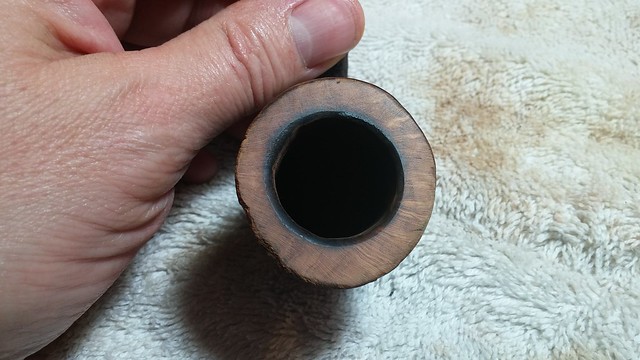
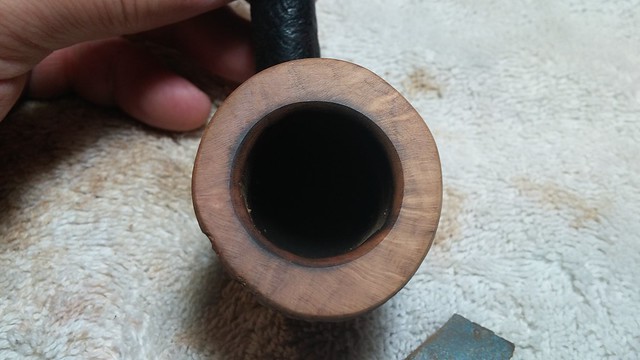
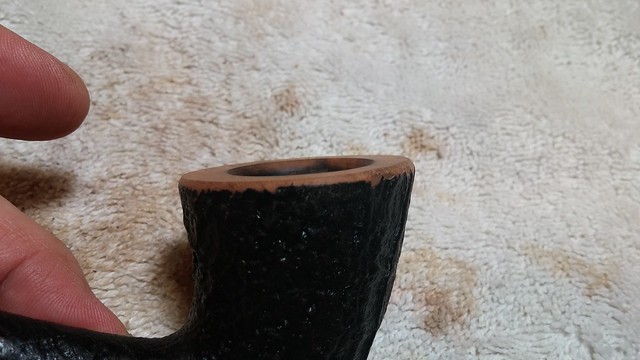
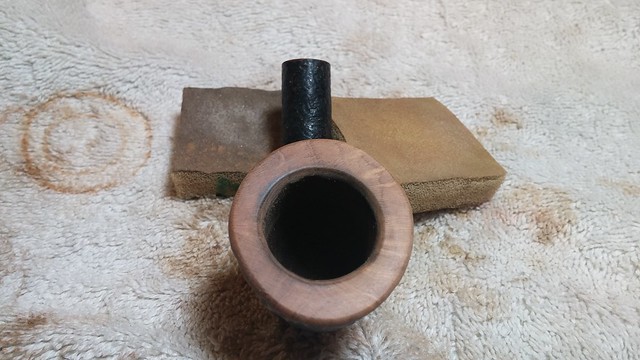

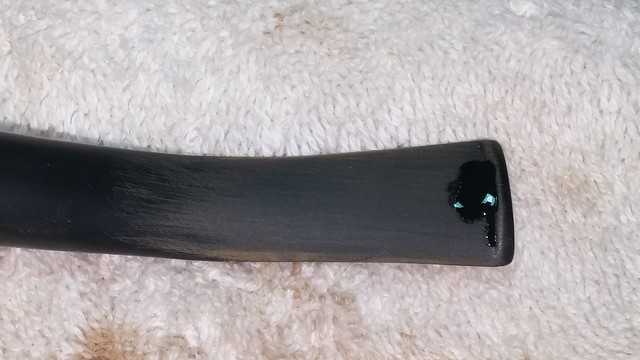

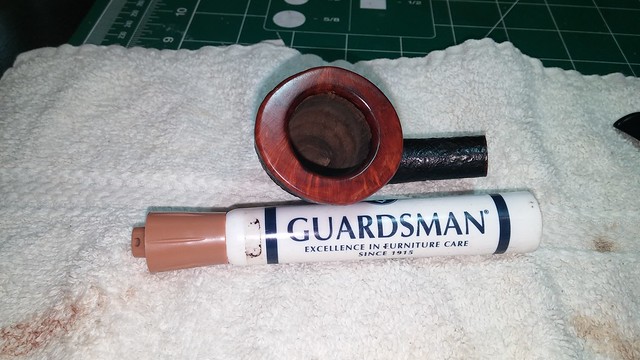


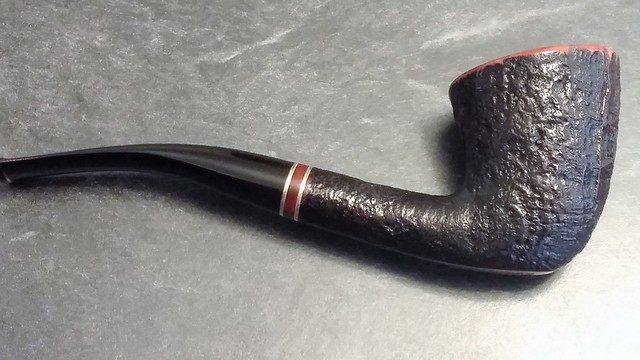
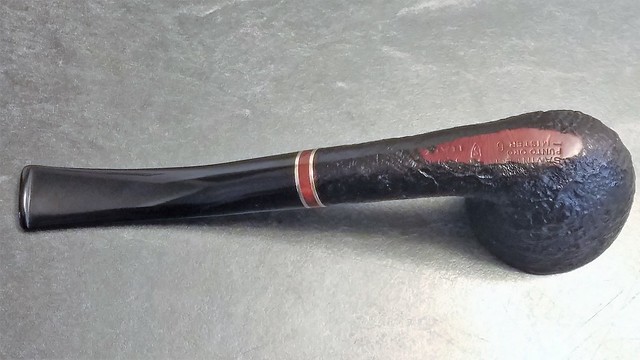
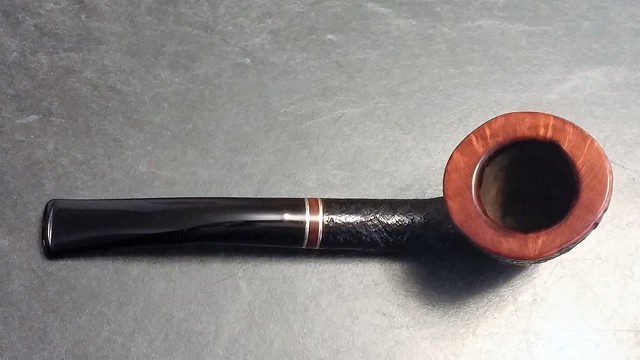
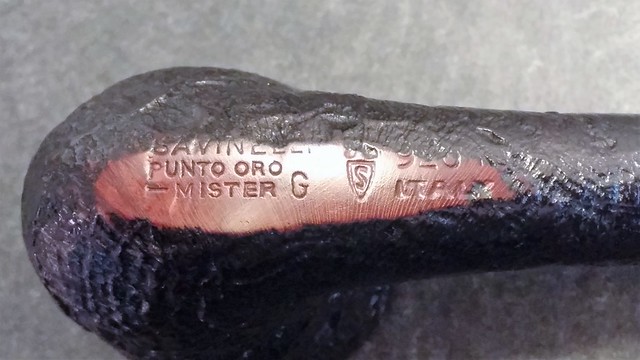

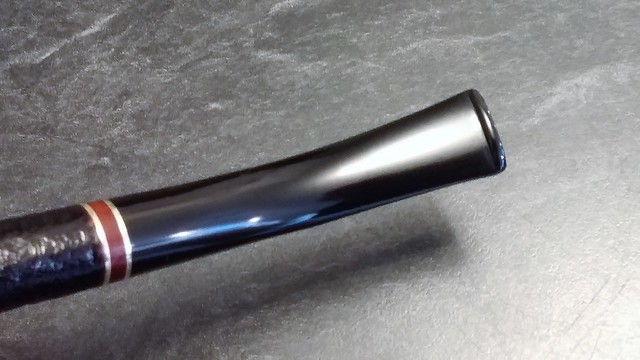

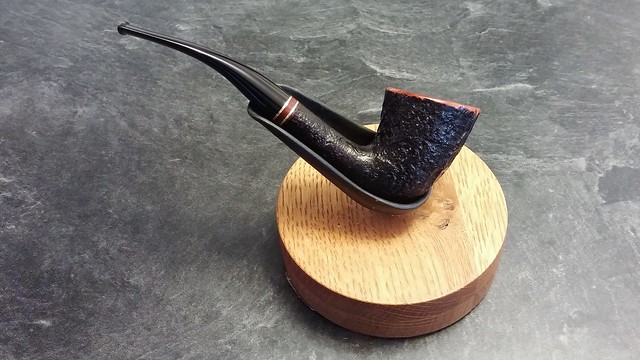
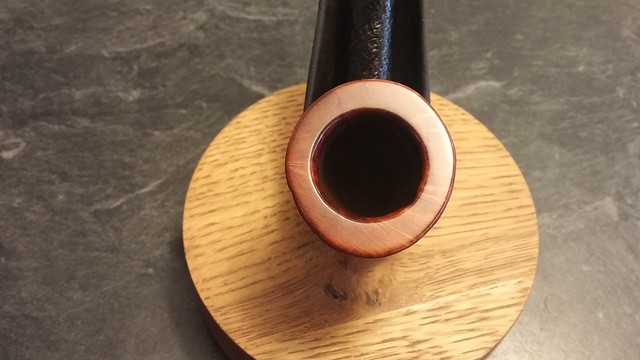
Charles, this is a like new restoration. Excellent job!
LikeLiked by 1 person
Thanks. This pipe was in pretty good shape under all the dirt and lava, which was a nice change. I’m very tempted to load up a bowl, but I’ll wait and see if anyone else is interested first. 😀
LikeLike
That restoration was really “on point”, yuck yuck! I find that one quite appealing. Well done.
LikeLiked by 1 person
It’s hard to argue with the classic shapes. Timeless appeal.
LikeLike
Very nice. That tube is the factory 6 mm filter adaptor, they work great on other filter pipes.
LikeLiked by 1 person
Thanks, Al. That’s good to know. I’ve reinstalled the adapter so I make sure it stays with the pipe.
LikeLike
Great work, especially on sanding the outer edge. It really is a classic and well executed design.
Of anyone wants to post this to me as a birth, gift, don’t be shy;)
LikeLiked by 1 person
Very nice looking classic sandblast …excellent work.
LikeLiked by 1 person